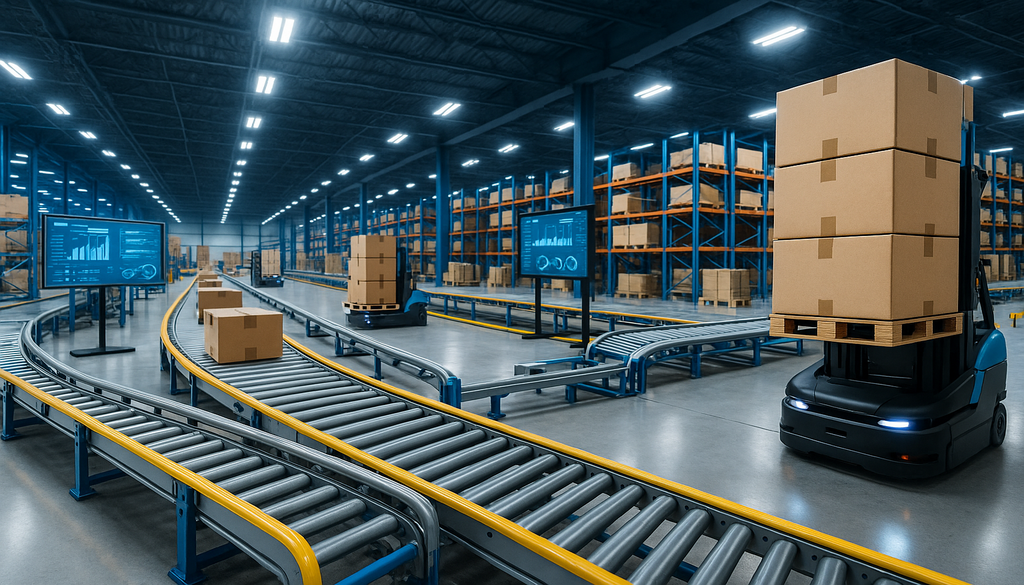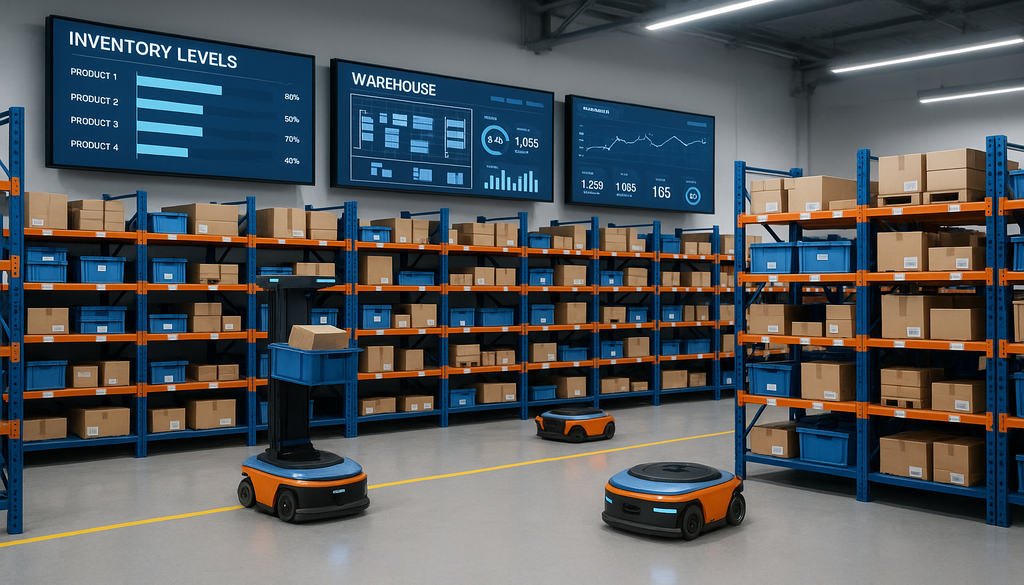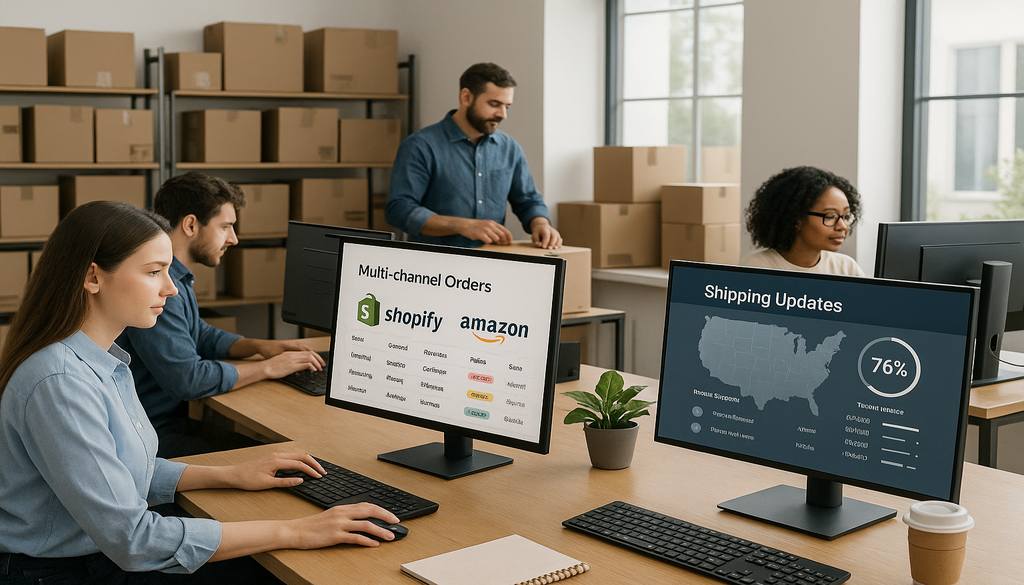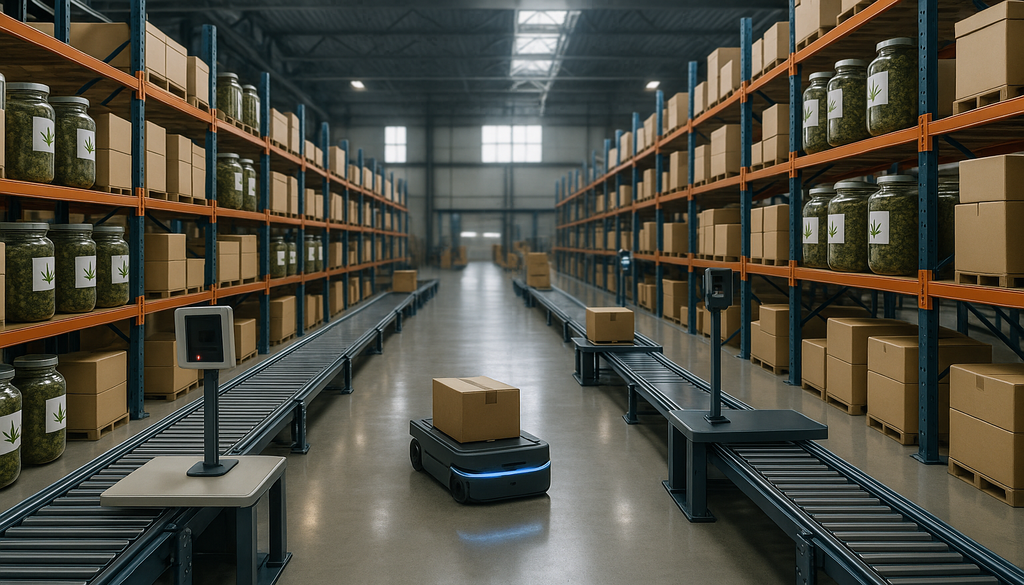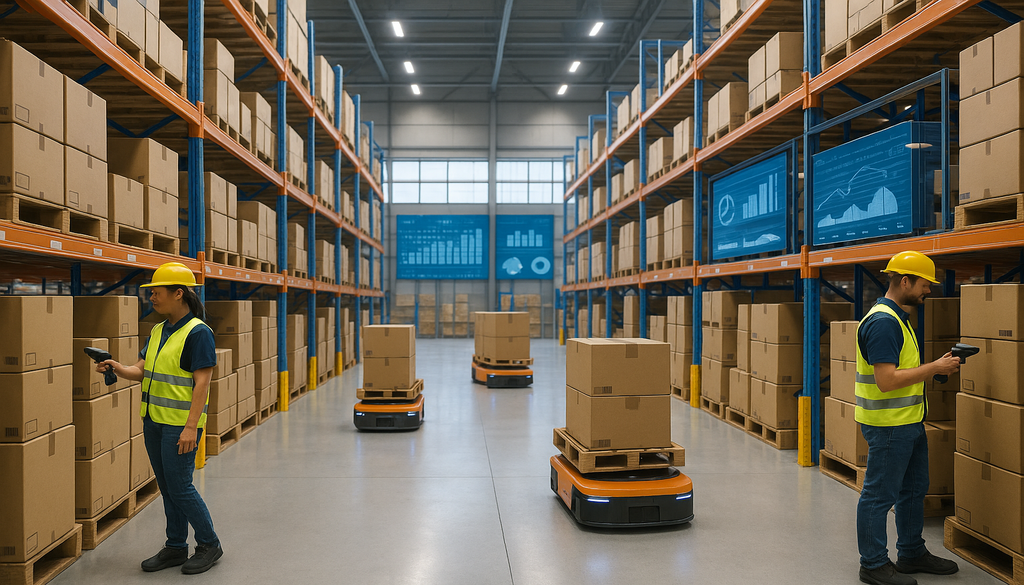Comprehensive Guide to 3PL Software: Key Benefits and Features for Enhanced Logistics
In today’s fast-paced logistics environment, third-party logistics (3PL) software has become an indispensable tool for businesses aiming to streamline their operations and enhance efficiency. As companies strive to meet increasing customer demands and manage complex supply chains, understanding the role of 3PL software is crucial. This guide will explore the benefits and key features of 3PL software, providing insights into how it can transform warehouse management and e-commerce logistics.
What is 3PL Software? An Overview
3PL software is a specialized tool designed to manage and optimize third-party logistics operations. It serves as a comprehensive solution that integrates various aspects of supply chain management, from warehousing and inventory control to order fulfillment and shipping. Unlike traditional logistics solutions, which often operate in silos, 3PL software offers a unified platform that enhances visibility and coordination across the supply chain.
By leveraging real-time data and advanced analytics, 3PL software enables businesses to make informed decisions, improve operational efficiency, and reduce costs. It is particularly beneficial for companies that outsource logistics functions to third-party providers, as it facilitates seamless communication and collaboration between all stakeholders involved.
Key Features of 3PL Software
One of the standout features of 3PL software is its robust inventory management capabilities. It allows businesses to track inventory levels in real-time, providing accurate insights into stock availability and movement. This feature is crucial for preventing stockouts and overstock situations, ultimately leading to better inventory control and cost savings.
Integration capabilities are another critical aspect of 3PL software. The software can seamlessly connect with existing systems such as enterprise resource planning (ERP) and customer relationship management (CRM) platforms. This integration ensures that data flows smoothly across different departments, enhancing overall operational efficiency.
Automation is at the heart of 3PL software, particularly in order fulfillment and shipping processes. By automating routine tasks such as order processing, picking, packing, and shipping, businesses can significantly reduce manual errors and speed up delivery times. This automation not only improves accuracy but also enhances customer satisfaction by ensuring timely deliveries.
Advanced reporting and analytics tools are also integral to 3PL software. These tools provide valuable insights into various aspects of logistics operations, enabling businesses to identify trends, measure performance, and make data-driven decisions. With customizable dashboards and reports, companies can monitor key performance indicators (KPIs) and optimize their logistics strategies accordingly.
Benefits of Implementing 3PL Software in Your Operations
Implementing 3PL software can lead to significant improvements in fulfillment operations. By streamlining processes and automating tasks, businesses can enhance their efficiency and productivity. This increased efficiency translates to faster order processing and reduced lead times, which are critical factors in maintaining customer satisfaction and loyalty.
Cost reduction is another major benefit of 3PL software. By optimizing inventory levels, reducing manual errors, and improving operational efficiency, businesses can lower their logistics costs. Additionally, the scalability of 3PL software allows companies to expand their operations without incurring significant additional expenses, making it an ideal solution for growing businesses.
In the realm of e-commerce logistics, 3PL software plays a pivotal role in improving accuracy and customer satisfaction. With features such as real-time tracking and automated notifications, customers can stay informed about their orders, leading to a better overall shopping experience. This transparency and reliability foster trust and encourage repeat business.
How 3PL Software Supports E-commerce and Drop-shipping
E-commerce businesses, in particular, can benefit immensely from 3PL software. The software offers specific tools and features tailored to the unique needs of online retailers, such as multi-channel order management and integration with popular e-commerce platforms like Shopify and Amazon. These features enable businesses to manage orders from multiple sales channels efficiently, ensuring a seamless customer experience.
Drop-shipping, a popular business model in e-commerce, also benefits from 3PL software. By automating order processing and fulfillment, businesses can quickly and efficiently ship products directly from suppliers to customers, reducing the need for inventory storage and handling. This streamlined process not only saves time and resources but also allows businesses to offer a wider range of products without the associated risks of holding inventory.
Real-world examples highlight the transformative impact of 3PL software on e-commerce logistics. For instance, a leading online retailer implemented 3PL software to manage its growing order volume and complex supply chain. As a result, the company achieved a 30% reduction in order processing time and a 20% increase in customer satisfaction, demonstrating the tangible benefits of this technology.
Choosing the Right 3PL Software for Your Business
Selecting the right 3PL software is a critical decision that can significantly impact your logistics operations. Several factors should be considered when evaluating software options, including the size of your operations, specific business needs, and budget constraints. It’s essential to choose a solution that aligns with your company’s goals and can scale with your growth.
When evaluating software providers, consider their track record and reputation in the industry. Look for providers that offer comprehensive support and training to ensure a smooth implementation process. Additionally, request demos and trial periods to test the software’s functionality and compatibility with your existing systems.
Future Trends in 3PL Software and Logistics Technology
The logistics industry is constantly evolving, and 3PL software is no exception. Emerging technologies such as artificial intelligence (AI), machine learning, and the Internet of Things (IoT) are poised to revolutionize third-party logistics. These technologies offer the potential to enhance predictive analytics, automate complex decision-making processes, and improve overall supply chain visibility.
In the next decade, we can expect logistics software to become even more sophisticated, with advanced features that cater to the growing demands of e-commerce and global supply chains. As businesses continue to embrace digital transformation, staying ahead of these trends will be crucial for maintaining a competitive edge in the logistics landscape.
Conclusion
In conclusion, 3PL software is an essential tool for modernizing logistics operations and enhancing supply chain efficiency. By offering robust features such as inventory management, automation, and integration capabilities, 3PL software empowers businesses to streamline their operations, reduce costs, and improve customer satisfaction. As the logistics industry continues to evolve, adopting these technologies will be vital for maintaining a competitive advantage and achieving operational excellence in warehouse management and beyond.
Frequently Asked Questions (FAQ)
Q1: How does 3PL software integrate with other supply chain management tools?
A1: 3PL software typically features robust integration capabilities that allow seamless communication between various supply chain management platforms. This integration enhances data accuracy and process efficiency by ensuring that information flows smoothly across different systems, such as ERP and CRM platforms.
Q2: Can small businesses benefit from 3PL software, or is it only for large enterprises?
A2: 3PL software is scalable and can be highly beneficial for businesses of all sizes. For small enterprises, it offers the ability to manage resources more effectively, streamline operations, and support growth without the need for significant additional investments. This scalability makes it an ideal solution for businesses looking to expand their logistics capabilities.
Q3: What are the security features of 3PL software?
A3: Most 3PL software comes equipped with advanced security features to ensure data integrity and safety. These features typically include data encryption, user authentication, and activity logs. By implementing these security measures, businesses can protect sensitive information and maintain compliance with industry regulations.
Q4: How does 3PL software impact customer satisfaction?
A4: By streamlining fulfillment operations and ensuring timely deliveries, 3PL software significantly enhances customer satisfaction. The software provides real-time tracking and automated notifications, keeping customers informed about their orders and fostering trust and loyalty. This improved transparency and reliability lead to a better overall customer experience.
Q5: Are there any significant challenges when implementing 3PL software?
A5: Implementing 3PL software can present challenges such as data migration, training staff on new systems, and initial integration efforts. However, these challenges can be mitigated with proper planning and support from the software provider. By investing in comprehensive training and seeking assistance during the implementation process, businesses can ensure a smooth transition and maximize the benefits of 3PL software.
{
“@context”: “https://schema.org”,
“@type”: “FAQPage”,
“mainEntity”: [
{
“@type”: “Question”,
“name”: “Q1: How does 3PL software integrate with other supply chain management tools?”,
“acceptedAnswer”: {
“@type”: “Answer”,
“text”: “3PL software typically features robust integration capabilities that allow seamless communication between various supply chain management platforms. This integration enhances data accuracy and process efficiency by ensuring that information flows smoothly across different systems, such as ERP and CRM platforms.”
}
},
{
“@type”: “Question”,
“name”: “Q2: Can small businesses benefit from 3PL software, or is it only for large enterprises?”,
“acceptedAnswer”: {
“@type”: “Answer”,
“text”: “3PL software is scalable and can be highly beneficial for businesses of all sizes. For small enterprises, it offers the ability to manage resources more effectively, streamline operations, and support growth without the need for significant additional investments. This scalability makes it an ideal solution for businesses looking to expand their logistics capabilities.”
}
},
{
“@type”: “Question”,
“name”: “Q3: What are the security features of 3PL software?”,
“acceptedAnswer”: {
“@type”: “Answer”,
“text”: “Most 3PL software comes equipped with advanced security features to ensure data integrity and safety. These features typically include data encryption, user authentication, and activity logs. By implementing these security measures, businesses can protect sensitive information and maintain compliance with industry regulations.”
}
},
{
“@type”: “Question”,
“name”: “Q4: How does 3PL software impact customer satisfaction?”,
“acceptedAnswer”: {
“@type”: “Answer”,
“text”: “By streamlining fulfillment operations and ensuring timely deliveries, 3PL software significantly enhances customer satisfaction. The software provides real-time tracking and automated notifications, keeping customers informed about their orders and fostering trust and loyalty. This improved transparency and reliability lead to a better overall customer experience.”
}
},
{
“@type”: “Question”,
“name”: “Q5: Are there any significant challenges when implementing 3PL software?”,
“acceptedAnswer”: {
“@type”: “Answer”,
“text”: “Implementing 3PL software can present challenges such as data migration, training staff on new systems, and initial integration efforts. However, these challenges can be mitigated with proper planning and support from the software provider. By investing in comprehensive training and seeking assistance during the implementation process, businesses can ensure a smooth transition and maximize the benefits of 3PL software.”
}
}
]
}

